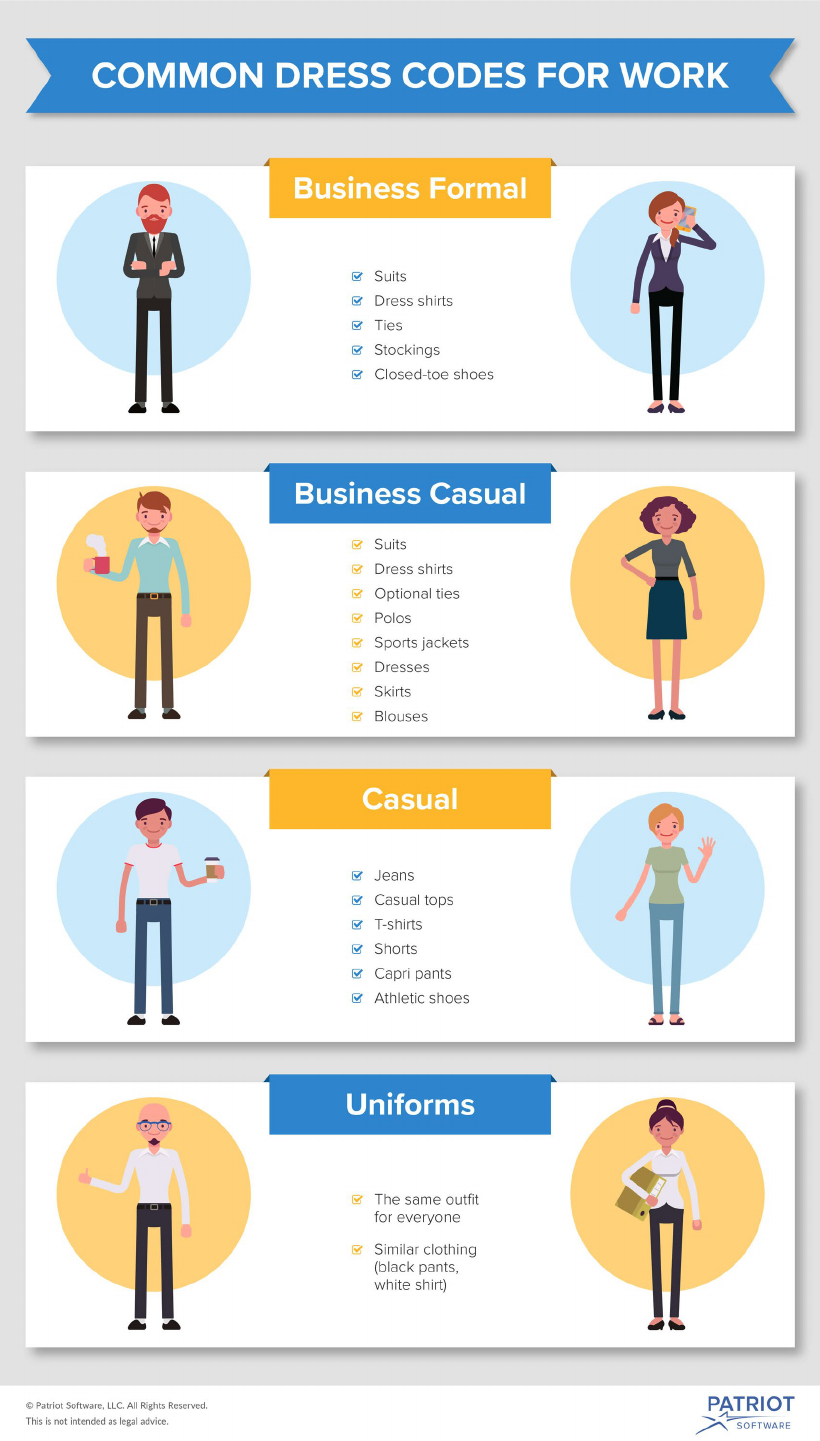
PERSONAL APPEARANCE
IN THE WORKPLACE
Personal presentation is how you present yourself in everyday situations. This is a
communication skill that is essential in gaining employment and being part of a
workplace environment. What you say and do are part of your personal presentation,
as well as your outward appearance. Dressing smartly, being clean and having
good personal hygiene, and carrying yourself well is all part of making a strong rst
impression and appearing professional.
Regardless of how you might feel about it, you will constantly be evaluated and re-
evaluated by the people around you, particularly by employers. Your appearance at
work sends many messages about how you view the environment, how much respect
you have for yourself and your work, what groups you identify with, and where you
think you belong within the organization. Making just a few adjustments to your
appearance may lead to more and better opportunities. The following suggestions and
tips will be useful for you as you enter the workforce.
Clothing / Dress
Dress the Part
Wearing appropriate clothing for your industry is key.
Appearing neat and tidy is important to show you’ve made an
effort. Whatever the dress code is at your workplace, do your
research and take the time to t in, while remaining true to
yourself. It’s okay to stand out sometimes, but you don’t want
to be the only one wearing jeans and sneakers when everyone
else is wearing a suit and tie.
Know the Expectations
Begin by researching the type of clothing worn by people in
your chosen industry. Be sure that if there is a dress code at
your place of employment, you are aware of it and become
familiar with it. A good rule of thumb is to look around and
if no one else is wearing that type of clothing, you probably
shouldn’t either.
Neat and Tidy
Be sure that your outt is clean, dry, and not wrinkled. Laying your clothes out the night
before might be helpful to make sure everything is properly laundered and looks good
before the rush of your morning routine.

Professional, Company Representative
The most important thing to remember is that you are a professional, regardless of what career
you are in, and you are a representative of the company or organization you work for. How you
look when you show up to work every day and when you’re at work events will inuence what
people think of you. Dressing in a clean, neat, and modest way each day will ensure you are a
good representative of yourself and your company.
Dress for the Job You Want
There is a popular saying, “Dress for the job you want, not the job you have” that simply means
dress the part. Your personal presentation and appearance will have an impact on the rst
impressions you make on others and you want that to be positive. Dressing for the job you want
could be totally okay, but be aware that if you show up dressed like the top executives in your
company, that may be seen as unprofessional because they have earned the right to dress how
they please, and you have not (yet). Also keep in mind the job you have what appropriate dress
is for that job. As an example, if you’re a preschool educator, dressing in a suit is not the right
clothing for that job. The bottom line is to dress smart and put some effort into your appearance.
More information on the types of business attire, with examples, can be found in this article: Guide
to Business Attire from Indeed.com.
TYPES OF BUSINESS ATTIRE
Casual
• Informal clothing that might be worn not only at work, but also outside of work
• Avoid wearing casual clothing with clients and during interviews
• Jeans, t-shirts, shorts, sandals, sneakers
Smart Casual
• Another form of casual attire with a stylish twist
• Appropriate for more exible ofces
• Dresses, blazers, trousers, sports jackets, khakis, button-down shirts
Business Casual
• Common in many workplaces
• Generally appropriate for interviews, client meetings, and ofce settings
• Good way to dress if you’re unsure of the setting since it isn’t too formal or too casual
• Pencil skirts, button-downs, khakis, blazers, sport coats
Business Professional
• Traditional attire for more conservative settings or companies
• Well-tted, tailored clothing
• Dresses, skirts, slacks, button-downs with blazers, dark-colored suits, ties
Business Formal
• Usually reserved for the most formal settings such as award ceremonies, benets,
special dinners or other evening work events
• Similar to “black tie”, but reserved to maintain professionalism
• Pantsuit, skirt suit, dark suit and tie, black suit


Other Appearance-Based Considerations
Many companies and employers require employees to follow a dress code that can also
include restrictions on piercings, tattoos, makeup, nails, hair, facial hair, and more. As long as
these policies are not discriminatory, they are, for the most part, legal. Some variations may exist
between men and women in the policy, however, major differences in the requirements between
genders should not be present.
Hairstyles
Your employer may have rules and restrictions on the type of hairstyle you can wear as an
employee. Extreme haircuts, like a mohawk, or crayon-colored hair may not be permitted as part
of your company’s dress code. It is important to be familiar with the types of hairstyles that may
be permitted in your industry. If, for example, you are a programmer working remotely, it may
not matter. Do your research ahead of time and prepare yourself for the expectation that you
may not be able to wear your hair exactly as you like in the career that you choose.
It is also worthwhile to become familiar with hairstyle-based discrimination. This type
of discrimination, based on hair texure, is a form of social injustice that Black candidates and
employees may face in the workplace if they wear their hair in more natural ways. Policies and
“guidelines that call for ‘professional’ or not ‘extreme’ looks
can disproportionately lead to bias against Black employees”
(McGregor par. 15) and these types of policies generally restrict
traditional African-American hairstyles. According to The
CROWN Act, Black women are 1.5 times more likely to be sent
home from the workplace because of their hair and are 80%
more likely than white women to feel as though they have to
change their hair from its natural state to t in at the ofce.
The CROWN Act (Create a Respectful and Open
Workplace for Natural Hair) “is a law that prohibits race-based
hair discrimination, which is the denial of employment and
educational opportunities because of hair texture or protective
hairstyles including braids, locs, twists, or bantu knots” (CROWN
Act). At the time of publication, the CROWN Act has been
passed into law in 7 states (California, Colorado, Maryland, New
Jersey, New York, Virginia, and Washington), 17 states proposed
a CROWN Act but it was not passed, and another 7 states have led for a CROWN Act (CROWN
Act). It is recommended to look into the laws in your state of employment to be familiar with
your rights related to hairstyle.
Tattoos and Piercings
Though tattoos and piercings have become more a part of mainstream culture, it does not
mean that they are a welcome addition to a company’s dress code. It is not against the law to
discriminate against someone with tattoos or piercings in the workplace. Historically, tattoos and
piercings could have cost you the job, however, some companies are becoming more relaxed
in their policies regarding body art. While it is becoming more commonplace for folks to have
tattoos and piercings, that does not mean that all industries or companies within an industry will
nd it acceptable.

• You may be asked to cover any visible tattoos.
• You may not get hired if you have visible tattoos and facial piercings that
would be difcult to cover.
• Types and locations of tattoos and piercings may be received differently.
• The genre, quality, and visibility of a tattoo may impact an employer’s
decision.
• The size and location of a piercing will likely also have an effect on the
employer’s decision. A small, traditional ear piercing may be viewed
differently than large, gauged piercings or a nose ring.
• Restrictions on body art will vary depending on the industry and the
specic role or job.
THINGS TO CONSIDER BEFORE GETTING A TATTOO / PIERCING
1. Tattooing and body piercing carry some health risks.
• Skin infections, scarring, and allergic reactions are just some of the related health issues
that body art practices can carry.
2. It can be painful.
• Getting a tattoo or non-traditional piercing can be quite painful depending on the size,
location, and an individual’s pain threshold.
3. Tattoos are permanent.
• When deciding to get a tattoo or selecting the image(s) you want tattooed, be mindful
that your tastes may change when you are older.
• As your skin changes, stretches, and ages your artwork will be impacted.
• If you think you might regret a particular design, you should skip the tattoo.
• If you believe you want a career where body art isn’t favorable, you may want to skip it.
What to Expect
TIPS FOR JOB SEEKERS WITH BODY ART
1. Cover it up!
• While it’s not fair that an employer may stereotype you based on your body art, there
are no laws against it currently and it is likely to happen.
• To ensure success in your interviews, be sure to cover your tattoos with your normal
clothing and cover any others with bandages if absolutely necessary.
• Remove piercings except for traditional ear piercings.
2. Remove it.
• Removing a piercing permanently is easy enough. Just take out the ring or stud and
leave it. However, if you have gone the route of large gauged ear piercings, you will
likely be looking at some type of surgery to diminish the gaping holes that will remain.
• Laser tattoo removal is an option, but it is very costly. While the average cost of a
tattoo is around $200, laser removal can cost up to $5000.

1. Choose a small, noncontroversial design.
• Start small and in a less visible location. You
can always add more later if you decide you
want to, but starting small is a good idea if
you aren’t sure about it or if you want it to
have as little impact on your future career
as possible.
2. Do your research and ensure that the
tattoo parlor or piercing shop has the
required permits and follows proper
procedures.
• Tattoo and piercing shops should be as
clean as a dentist’s ofce.
• Talk with other customers who have had
work done by the artist and / or shop
about their experiences and the quality and
cleanliness of the work.
• Don’t be afraid to ask questions if you are
concerned or unsure about anything.
• Making sure the place is clean and they
are following the proper procedures will
minimize any infections or scarring that
could occur.
3. Make sure your body art can be easily
covered.
• Getting a face or neck tattoo is denitely
a bad idea and will signicantly limit your
chances of employment in the future.
• Hands and ngers are another place you
might want to reconsider, as well as the
forearms.
• Stretching your ears to an extreme size with
gauged piercings may also be something
you want to take your time considering as
well as any facial piercings.
4. Just wait.
• Waiting until you are older and have a
better idea of your career before getting
any type of body art is always a good
choice.
HOW TO MINIMIZE THE IMPACT OF BODY ART ON YOUR FUTURE CAREER
1. “Could you talk a little about the company culture and any policies I should be
aware of, such as dress code?”
• This could also be asked of the HR contact before the interview so you have an idea of
how to dress for that.
• Otherwise, it should be asked during your interview when the employer asks if you have
any questions (and if they have not already covered the information).
2. “Is there an employee handbook?”
• This would be asked after you have the job.
• If there is an employee handbook, this will likely hold answers to many of your questions
regarding personal appearance and more.
Questions for Employers Regarding Personal Presentation
